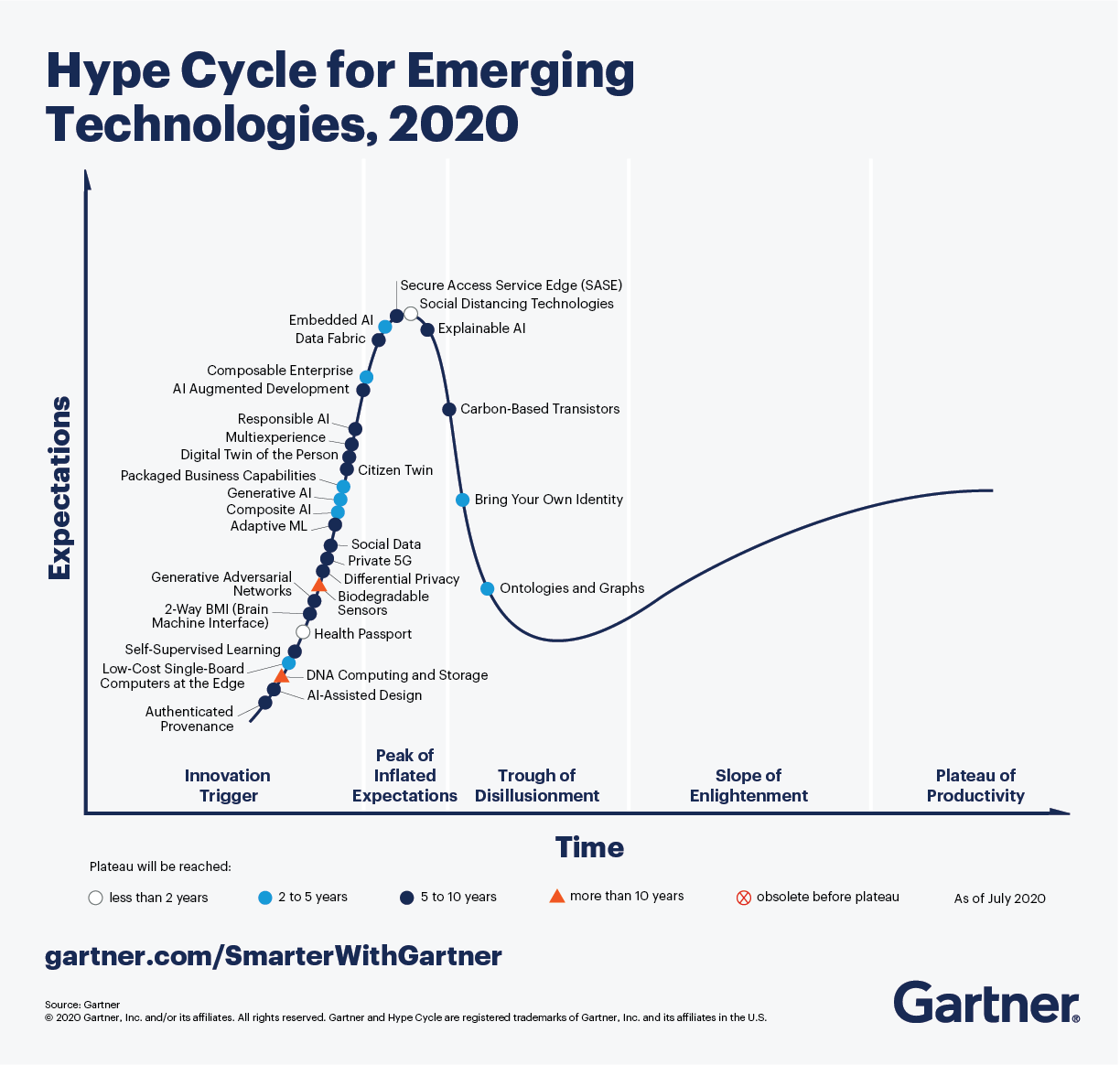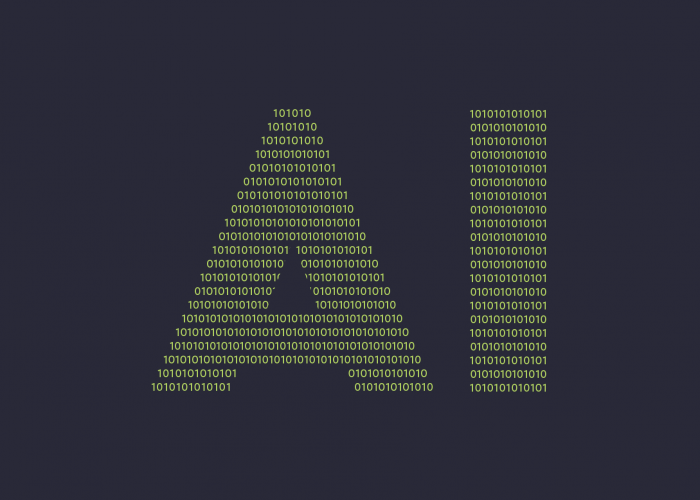Gartner: 5 most significant technology trends
What technologies will significantly affect business, society, and people over the next 5-10 years? According to Gartner VP of research Brian Burke, it includes technologies that enable a composable enterprise, aspires to regain society’s trust in technology, and alter the state of your brain.
In the latest research Hype Cycle for Emerging Technologies, 2020, experts analyzed more than 1.7 thousand new technologies and highlighted five unique trends:
- Composite architectures
- Algorithmic trust
- Beyond silicon
- Formative artificial intelligence (AI)
- Digital me

- Composite architecture
In the face of a rapidly changing reality, companies to shift to more agile, responsive architectures for building business processes. This approach allows responding quickly to changes.
Composite architecture increases business resilience. This modular design allows organizations to recompose themselves when necessary. For example, during a global pandemic or economic recession. The composite enterprise follows four basic principles:
- Modularity
- Efficiency
- Continuous improvement
- Adaptive innovation
Many organizations apply these principles piecemeal, and this is not as effective. It is vital to understand that a composite company applies all four principles in all parts of its organization – from the business model to how employees work.
The composite business architecture allows organizations to move away from rigid, traditional planning in favor of flexibility. Besides, it facilitates the introduction of new technologies: 5G networks, artificial intelligence, and data-related technologies.
- Algorithmic trust
The increasing number of leaks, fake news, and videos, as well as the bias of artificial intelligence, encourages organizations to move to an algorithmic model of trust. It ensures the confidentiality and security of data, the origin of assets, and the identities of people and things.
One of the ways to verify the authenticity of a product is to authenticate its origin on a blockchain. However, this method is not perfect because it only tracks the provided information, not the product itself. Let’s say that a fake product is added to the blockchain as if it were genuine. The algorithm will continue to work based on the incorrect input of the original data. Moreover, this data cannot be changed or deleted.
Gartner believes that the increased interest in blockchain technology will create additional opportunities for digital authentication and verification. At the same time, the implementation of algorithmic trust will ensure more control. Its main components are:
- secure access to goods and services, such as Secure Access Service Edge
- differentiated privacy
- responsible AI and explainable AI
- Silicon-free technology
According to Moore’s law, the number of transistors placed in the integrated circuit would double every two years. The technology is developing so rapidly that it has already reached the limit of silicon solutions.
That has led to the emergence of new materials that support smaller and faster technologies. For example, data can be stored in synthetic DNA chains. Various enzymes are used to process them. There are only two successful cases of technology usage. So far, it is too expensive and difficult to implement. Silicon-free technologies also include biodegradable sensors and carbon-based transistors.
- Formative artificial intellect
By formative artificial intelligence, we mean AI, capable of dynamic change depending on the situation. There are different types, ranging from AI that can dynamically adapt over time to technologies that can generate new models to solve specific problems.
For example, Generative AI can create any content or modify existing content. Texts, videos, images are all within its power, but the technology also has a dark side. The so-called deepfake has flooded the Internet, and in the next five years, their number will only grow. Unfortunately, such use of AI causes disinformation and can lead to reputational losses. But this does not mean that artificial intelligence is evil. With its help, you can create works of art, write music, make scientific discoveries, and prevent crimes.
- Digital me
Plots about the digital version of humans are becoming more and more popular. If before it seemed something unrealistic, now few people are surprised. Digital copies allow us to exist simultaneously in the virtual and real worlds.
Universal gadgets and implants capable of reading the electroencephalogram and mental state of a person already exist. It will be possible to change a person’s mental state, increase the level of concentration, prevent depression, and change behavior, using electrostimulation.
How can the business use these technologies? Authentication, access and payment, immersion analysis, and exoskeletons. Less honest options may include using stimulation to boost alertness in a fatigued employee or changing the mood, all by applying current to certain parts of the brain.
Gartner warns that the digitalization of a person will inevitably lead to negative consequences. After all, there will always be a cybercriminal who can hack into people’s neuro-interfaces and use it for their purposes.
What has 2020 brought us?
A year ago, no one could imagine how dramatically the world could change. In many countries, “digital passports” have become a reality. The pandemic was the reason to introduce such technology, the level of penetration into the market of individual countries was up to 20%. For example, in China, the mobile application Health Code is mandatory for citizens and tourists. It collects information about the location and assigns the user a color (red, yellow, green). Each color is an indicator and tells whether you free to travel the country or not.
There is a similar application in India (Aarogya Setu). It tracks the geolocation and also helps to identify symptoms of coronavirus. Without it, Indians cannot use trains and planes. The United Arab Emirates recently launched ALHOSN UAE, which also indicates via color if the person is okay, infected, or needs to be quarantined. Currently, the application should be used for air travel.
Source: Gartner




